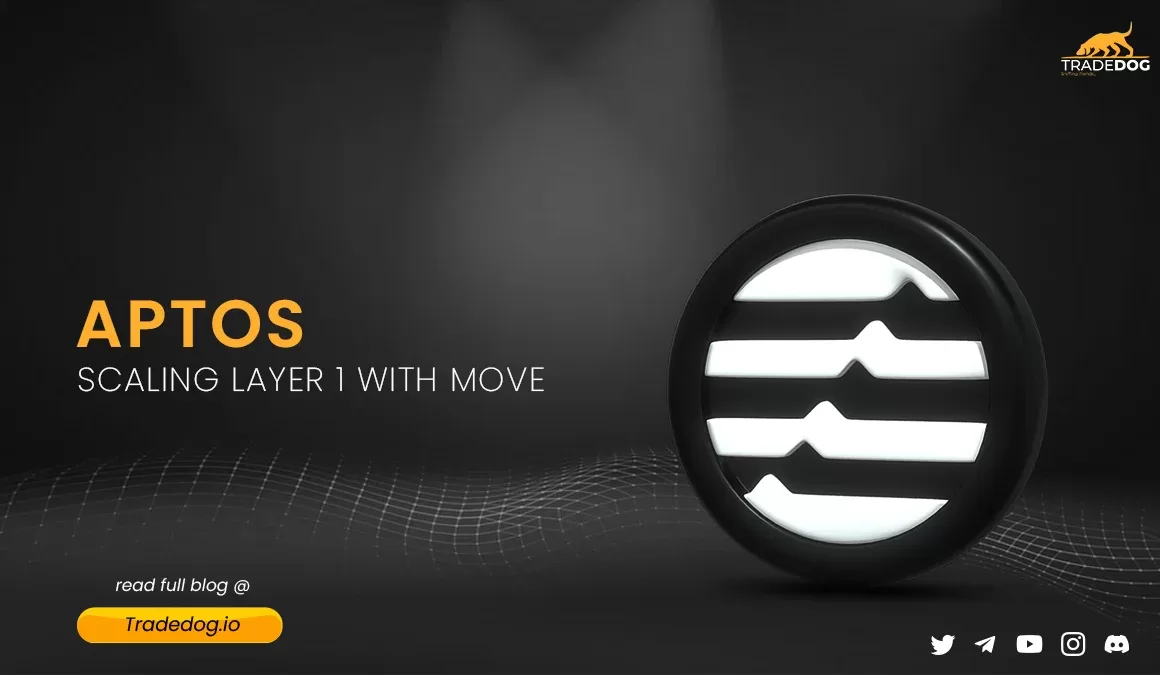Quick Links
A layer 1 blockchain protocol is the foundational blockchain network in charge of on-chain transactions and core functionality. The layer 1 blockchain is the underlying core architecture upon which other solutions, DApps, smart contracts, and even other chains can be built.
Different layer 1 blockchains are created for a variety of purposes. While Ethereum was the first blockchain to have smart contract capability and DApps and could be used to build tokens that run on the same network, Bitcoin was created to be a peer-to-peer currency for simple & trustless transactions.
Numerous networks, including Ethereum, Solana, Cardano, Polkadot, and others, are actively vying for the spotlight as blockchain technology continues to develop and redefine itself. The race to offer customers the ideal blend of decentralization, scalability, and security is a crucial component of this competition. As the competition is getting tighter with new layer 1s coming in the market almost every day, a new entrant Aptos was introduced in the market addressing to improve and solve every problem with the current L1 blockchains.
What is Aptos?
Move is a smart contract programming language that is used by the scalable Proof-of-Stake Layer 1 blockchain known as Aptos. Aptos Labs, a blockchain firm run by two former Meta employees Avery Ching and Mo Shaikh, is the company behind the initiative.
The announcement that Aptos had received $200 million in a seed round led by renowned venture capital company Andreessen Horowitz caused a stir in the cryptocurrency sector in March of this year. The business raised an additional $150 million at a pre-money valuation of $1.9 billion in July as part of a Series A investment round headed by FTX Ventures (FTX failure effect) and Jump Crypto. Two months later, in a venture raise led by Binance Labs, its valuation reached $4 billion.
The blockchain architecture used by Aptos, according to the company, can perform 160,000 transactions per second (TPS). This is because the Aptos transaction process incorporates a number of cutting-edge technology. We will go further into Aptos’ technology and operation to better understand how it offers high throughput and quick transaction processing.
How does Aptos Blockchain work?
Block STM Technology
Parallel execution is Aptos’ main strength. Usually Every time a trade or purchase is made, the transaction is added to a single long ledger that contains every transaction ever executed on the network and is updated by thousands of nodes. This method of transaction ordering is known as sequential, or serial execution, and it is used by the majority of blockchains.
It takes a long time for each new transaction to be validated because they are all added one at a time. Parallel execution, on the other hand, runs multiple simultaneous chains in, well, parallel, allowing—theoretically—for more to be processed at once. As mentioned earlier, the Aptos blockchain can theoretically reach 160, 000 transactions per second (TPS) while maintaining security and reliability.
Move Programming Language
A resource can only be moved between program storage locations and never cloned or deleted according to Move’s major capability of defining unique resource types. By successfully avoiding problems like the vulnerabilities mentioned above, this solution considerably enhances security. Move modules, which are similar to smart contracts in that they manage the processes that codify the rules for creating, updating, and deleting declared resources, govern resources after that. It’s flexible enough to handle the unique needs of Aptos developers, and its global storage is more secure than the average programming language. Move lets users define custom resources that can’t be copied or discarded, making it much more difficult for malicious entities to control the Aptos blockchain.
How is Aptos Different?
| Basis | Aptos | Ethereum | Solana | Avalanche |
| Speed | 160,000 TPS | 30 TPS | 5000 TPS | 4500 (Claim – Testnet) |
| Number of Cores | 16 | 1 | 12 | Min 8 |
| Time of Finality | <1 sec | 1 minute | 0.4 sec | ~1 second |
The tabel indicates that Aptos excels all the blockchains when it comes to speed and less gas fees whereas Ethereum’s reliability is undeniably superior. While Aptos doesn’t have many problems with outages, it can’t compare to Ethereum’s stability.
For Aptos and Solana, because they both rely on engines that can do computations in parallel, Aptos and Solana have comparable speeds. The Aptos blockchain, on the other hand, appears to be more dependable when compared to the Solana blockchain. With noteworthy outages and downgrades, Solana has a history of failure.
Although the performance of both Avalanche and Aptos is very amazing, the Aptos blockchain surpasses in usability. When NFT games are contributing to surges in transaction volumes, Avalanche frequently has extremely high gas fees.
FTX Effect
After the FTX debacle, the entire crypto market was on edge. Some assets were exposed to high risk and saw huge dumps and losses, including FTX tokens (FTT), Solana (SOL), and Serum (SRM). It’s interesting to note that a purported Tether exposure to Alameda also caused USDT to be unpegged from USD.
Investors were alarmed by a suggestion that Aptos’ treasury was also exposed to FTX. The current crypto asset may experience another FTT dump because to the rumor’s resultant fear, uncertainty, and doubt (FUD).
Aptos quickly responded by separating themselves from FTX/Alameda in a statement. It reaffirmed that the treasuries of Aptos Labs and the Aptos Foundation were unrelated to FTX and would continue to function normally. Amidst the rumor, Aptos’ prices continued to fall. However, immediately after the statement, there was an upward price increase.
Problems with Aptos Tokenomics
The APT coin distribution & incentive scheme can be seen in the picture.
The crypto community soon strated to criticize Aptos for how much APT is held by individual investors. One billion Aptos tokens were reportedly available at the commencement of the mainnet launch, of which 510 million were distributed to community members, 190 million were given to core contributors, and the remaining tokens were given to the Aptos Foundation and private investors.
Shaikh, a co-founder of Aptos, claims that numerous tokens, including those distributed to the community and foundation, were staked at the time of genesis. He continued by explaining that whoever invests will receive proportionate staking benefits that might become available every 30 days.
People were not happy with the model as due to the founders’ control over the majority of the tokens and their ability to filter transactions and make arbitrary changes to the protocol makes Aptos a centralized blockchain. Many PoS blockchains have already been criticized of having a tendency toward centralization, but in the case of Aptos, this problem is almost too blatant.
Naturally, limiting the total quantity would destroy the market, therefore Aptos gave 2% of their tokens as an airdrop to the first testnet users. The latter’s goals should have been obvious to the crypto exchanges, as many of them offered the $APT token on both spot and perpetual contract markets (with Binance offering a notable x25 leverage), allowing users to freely short their tokens.
Aptos Expansion Plan
Aptos and Google Cloud Collaboration
Mo Shaikh, co-founder and Chief Executive Officer of Aptos, and Simon Baksys, head of business development and go-to-market for Google’s web3 group, spoke out on a discussion at Token2049 in London and provided specifics on the partnership.
Shaikh said that this was the first time a web2 and a web3 firm had collaborated in such an important way. He further stated that Google Cloud would verify nodes and engage in the Aptos mainnet. Additionally, Google Cloud’s BigQuery service will analyze and make the Aptos blockchain accessible.
With the introduction of an accelerator program and a hackathon together next year, Google and the Aptos Foundation intend to support emerging talent.
Other Plans
Aptos appears to have included a number of the projects connected to Libra and Diem into its ecosystem since its launch. That’s encouraging since it increases the ecosystem’s potential for expansion.In addition, the project seems to have gained momentum after the deployment of its testnets. According to early community comments, the network has so far outperformed other networks in terms of TPS and time-to-finality rates.
Conclusion
The current market conditions do indicate that the upcoming trend of crypto is extremely uncertain. With the aim of using move technology, Aptos has seen growth in popularity and use case and with some of the biggest names as their backers including a16z, others include PayPal Ventures, Coinbase Ventures and more, the Aptos chain seems to have all the tools to climb the mountain.
Recent backlash regarding the tokenomics structure has raised some questions regarding the viability of the project and their token, but at the end of the day, Move technology, which is a ground-breaking programming foundation for blockchain scalability and security, is probably here to stay. Aptos Labs puts its name on the long-term viability of the blockchain and has decades of experience in the blockchain business in addition to Meta.










